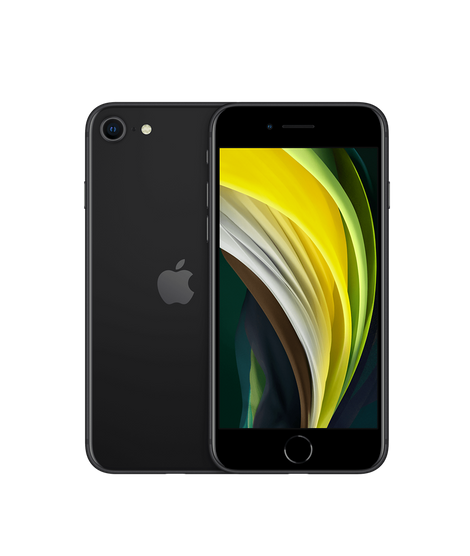Apple iPhone SE (2022) vs. Samsung Galaxy S22
Legacy design takes on future tech.
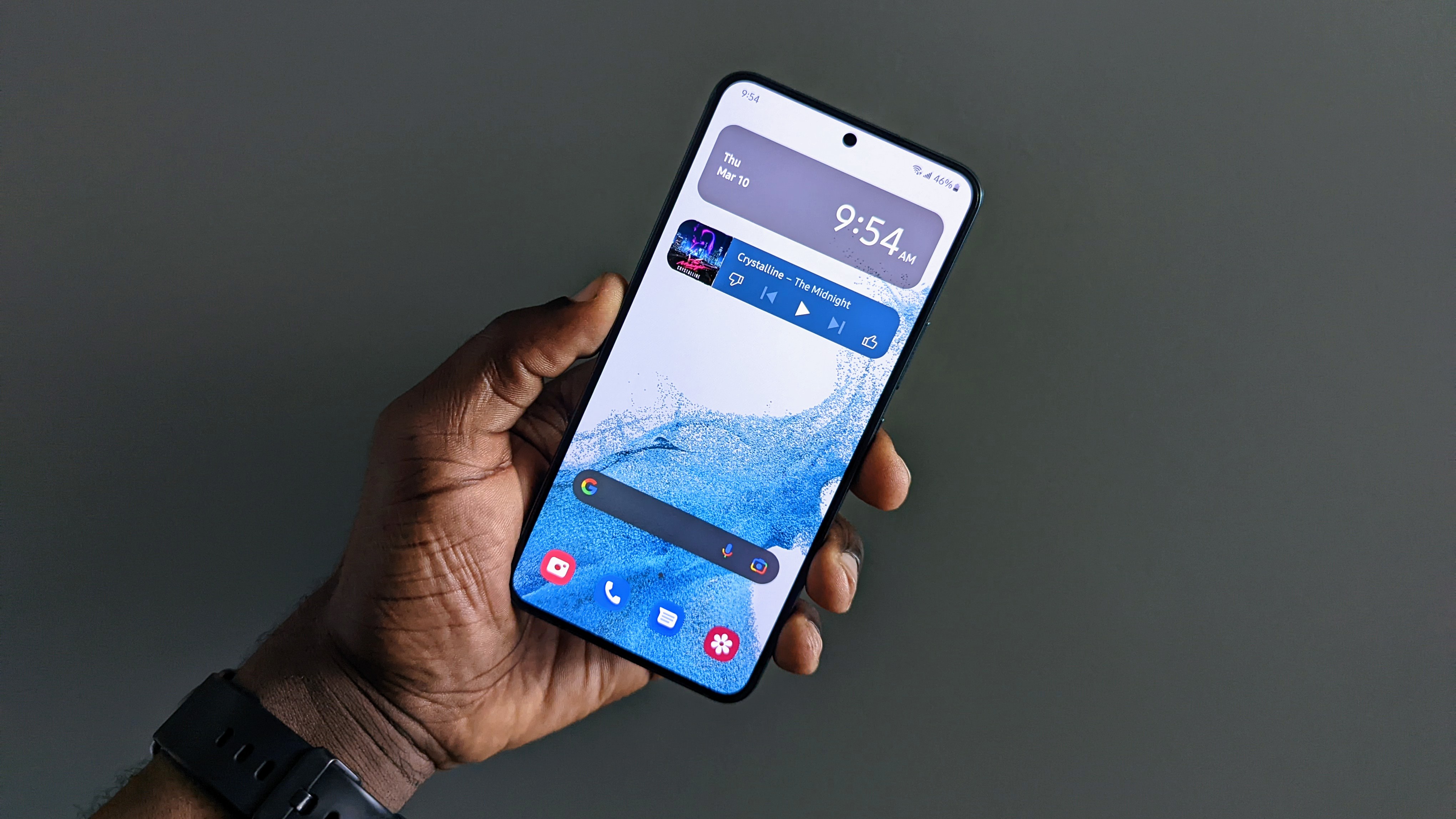
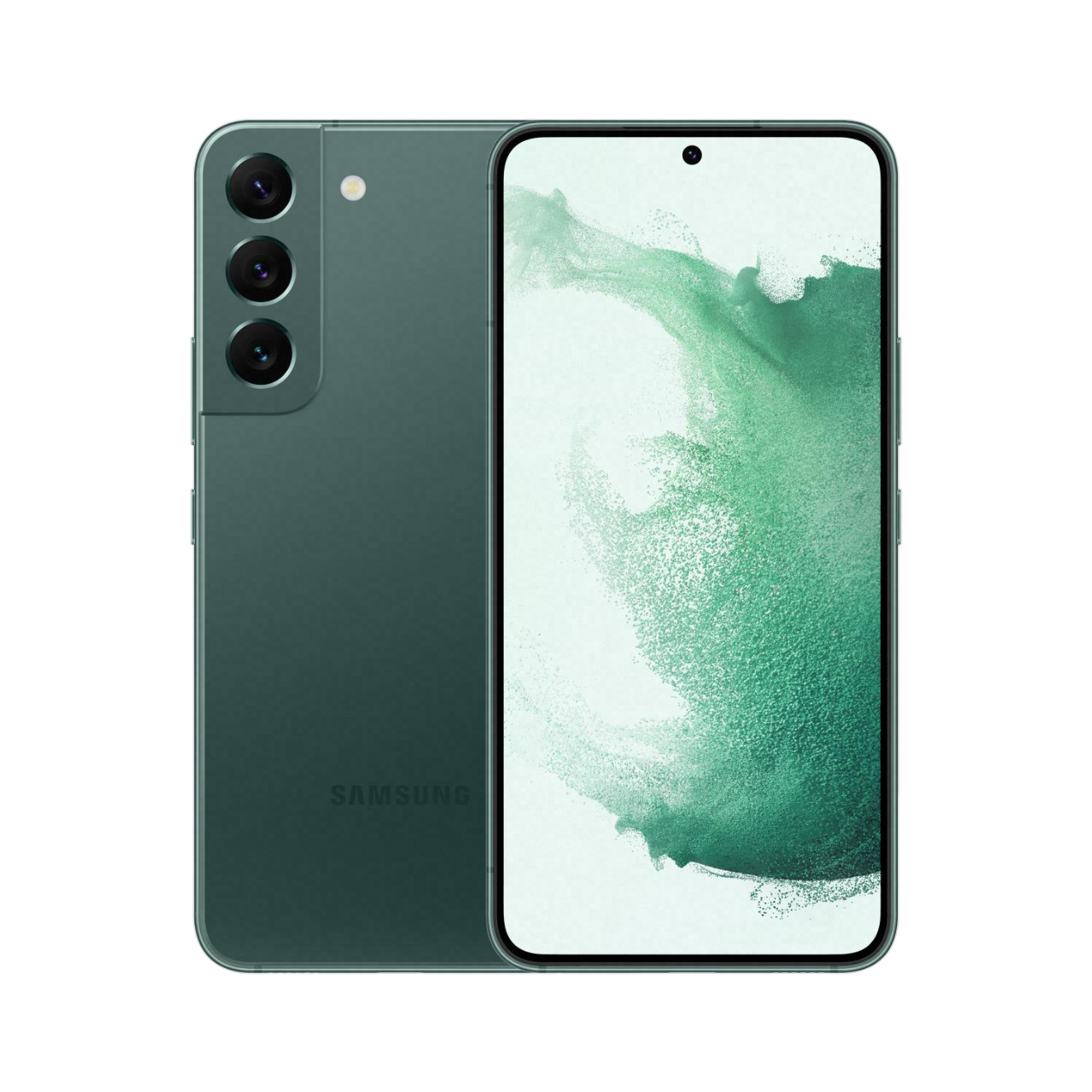
Samsung's smaller flagship is more expensive than the iPhone SE and fails to impress in terms of battery life. However, the S22 offers a more up-to-date camera system and a taller bezel-free display that feels more comfortable to use in 2022.
+ Bright, fast 120Hz screen
+ Borderless display
+ Triple camera setup
+ Five years of security updates
- Weak battery life
- iPhone still likely to be supported for longer
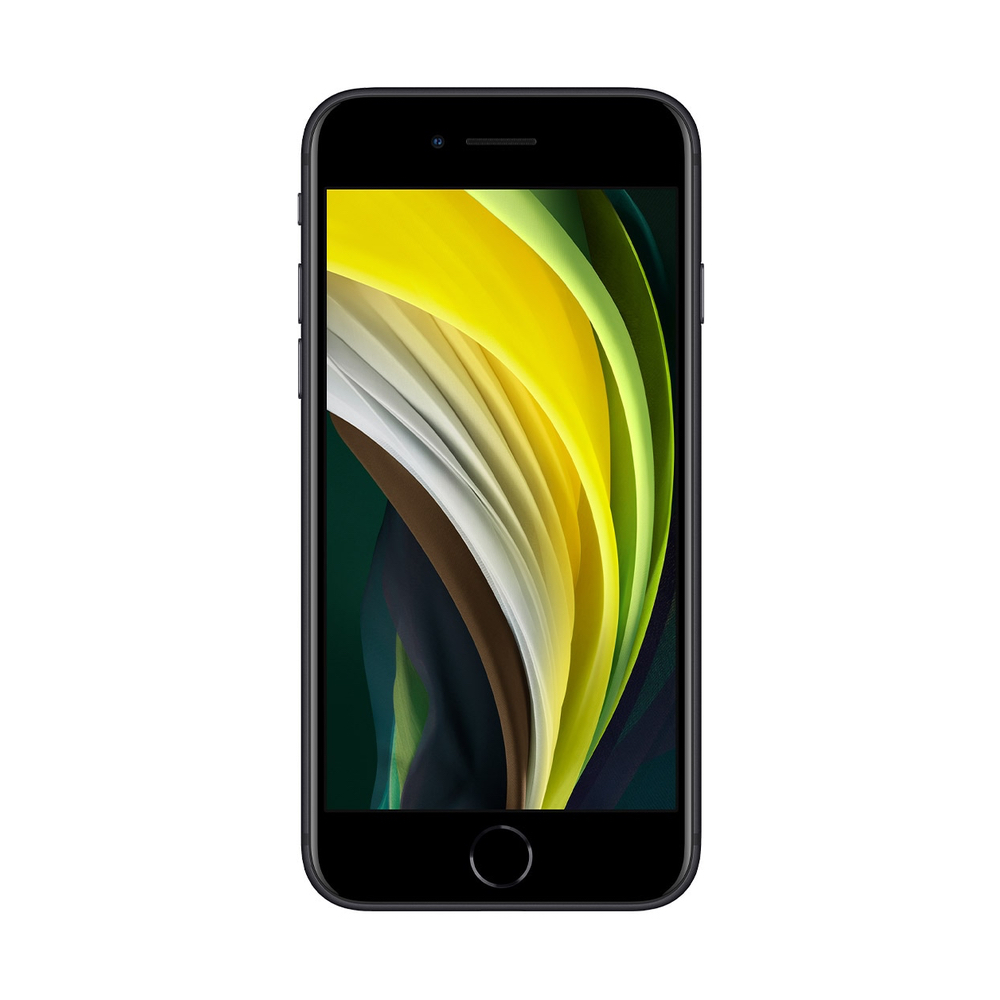
Apple's latest affordable handset should be future-proof enough with its top-tier processor, 5G connectivity, and the company's strong track record with software updates. But the display and rear camera can't compete with newer Android offerings like the S22.
+ Lightning-fast A15 Bionic chip
+ Guaranteed long support lifespan
+ Small, user-friendly design
+ 5G connectivity at a low price
- Only one rear camera
- Low-res 60Hz LCD screen
- Dated design
iPhone SE (2022) vs. Samsung Galaxy S22: Different priorities
The Samsung Galaxy S22 aims to pack as much of Samsung's top-tier smartphone tech as possible into a relatively small form factor. With its 6.1-inch display diagonal and uniform borders, it's one of the best Android phones you can buy. It benefits from in-screen fingerprint tech, and the display is interrupted only by the hole-punch selfie camera.
Meanwhile the iPhone SE (2022) repurposes a tried and true design and outfits it with some of the latest Apple tech. It's able to meet its much lower price point thanks to a less ambitious chassis design. The iPhone's front face sports a 4.7-inch 16:9 LCD paired with Touch ID sensor in its sizable lower screen border, a familiar look dating back to the earliest days of the iPhone.
While the S22 is relatively compact for an Android phone, Apple's handset is even smaller and lighter. That's great if you want a device that's easier on your pockets and more comfortable to use with one hand, but the aspect ratio may make the iPhone feel a bit more cramped than a phone with taller proportions. SE owners will also miss out on the punchier colors, higher resolution, and faster refresh rate of Samsung's latest SuperAMOLED 2X offering. This is one area where the iPhone seems like it's a generation behind.
| Category | Apple iPhone SE (2022) | Samsung Galaxy S22 |
| Processor | Apple A15 Bionic | Snapdragon 8 Gen 1 (U.S.) or Exynos 2200 (ROW) |
| RAM | 4GB | 8GB |
| Storage | 64 / 128 / 256 GB | 128 / 256 GB |
| OS | iOS 15.4 | One UI 4.1 / Android 12 |
| Display | 4.7-inch LCD | 6.1-inch SuperAMOLED 2X |
| Main Camera | 12 MP, f/1.8 (wide), PDAF, OIS | 50 MP, f/1.8, 23mm (wide), 1/1.56", 1.0µm, Dual Pixel PDAF, OIS |
| Telephoto Camera | N/A | 10 MP, f/2.4, 70mm (telephoto), 1/3.94", 1.0µm, PDAF, OIS, 3x optical zoom |
| Ultrawide Camera | N/A | 12 MP, f/2.2, 13mm, 120˚ (ultrawide), 1/2.55" 1.4µm, Super Steady video |
| Front Camera | 7 MP, f/2.2 | 10 MP, f/2.2, 26mm (wide), 1/3.24", 1.22µm, Dual Pixel PDAF |
| 5G Connectivity | Yes | Yes |
| Water/Dust Resistance | IP67 | IP68 |
| Price | $429 | $849 |
Apple's big advantage comes from the silicon powering the iPhone SE. It's the same A15 Bionic chipset used in the top-tier iPhone 13 series, meaning you're getting an almost ludicrous amount of power for a phone of this size at this price point. Paired with a 1344x750-resolution display — closer to HD than Full HD or even Quad HD — this phone should sip power, even with the added battery draw of 5G connectivity.
While the iPhone SE's battery life may not be anything to write home about — scoring a pretty average 9 hours and 5 minutes in Tom's Guide's battery benchmark test, it still came out ahead of the Galaxy S22, which scored two hours lower. That matches our own impressions — Android Central's Derrek Lee was disappointed in the battery performance of the smaller S22 in his testing of the phone.
Both phones offer relatively fast charging though, with 25W refills supported via USB-C on the S22 and 18W on the iPhone SE with Apple's faster lightning charger — in addition to Qi wireless charging. (It's worth noting though that the S22+ and Ultra can use 45W charging.)

Once you get past the enormous difference in form factor and displays, there's also the question of software and ecosystem. On the Galaxy S22, you'll be living in Android land, running Android 12 out of the box with Samsung's One UI 4.1 and guaranteed security updates until 2027. As good as that is, the iPhone SE is likely to last even longer, and will benefit from the same day-one updates that all other iPhones enjoy whenever there's a new version of iOS. On the S22, you'll likely be waiting longer for new platform versions, especially as the phone ages.
Otherwise, your software choices will come down to many of the same questions you might wrestle with when deciding between any iPhone or Android handset. Check out our switching to Android series for more on how the software and ecosystem differences shake out between the two platforms.
Camera performance is also a huge area of divergence, and arguably the biggest compromise for iPhone SE buyers. Samsung's phone is right up to date with a capable triple-camera setup, featuring wide, ultrawide and telephoto shooters roughly equivalent to what you'll find on the iPhone 13 Pro. But the SE offers just a single rear-facing shooter, and even that is a generation or so behind the cutting edge. That means on the iPhone you'll miss out on sharper photos of distant subjects, and you'll need to resort to panorama mode to capture a wider field of view.
In its review, Tom's Guide found camera performance to be on par with the cheaper Google Pixel 5a than more expensive Android handsets, and even then the budget Google phone pulled ahead in places, with brighter and sharper low-light captures.
iPhone SE (2022) vs. Samsung Galaxy S22: Which should you buy?
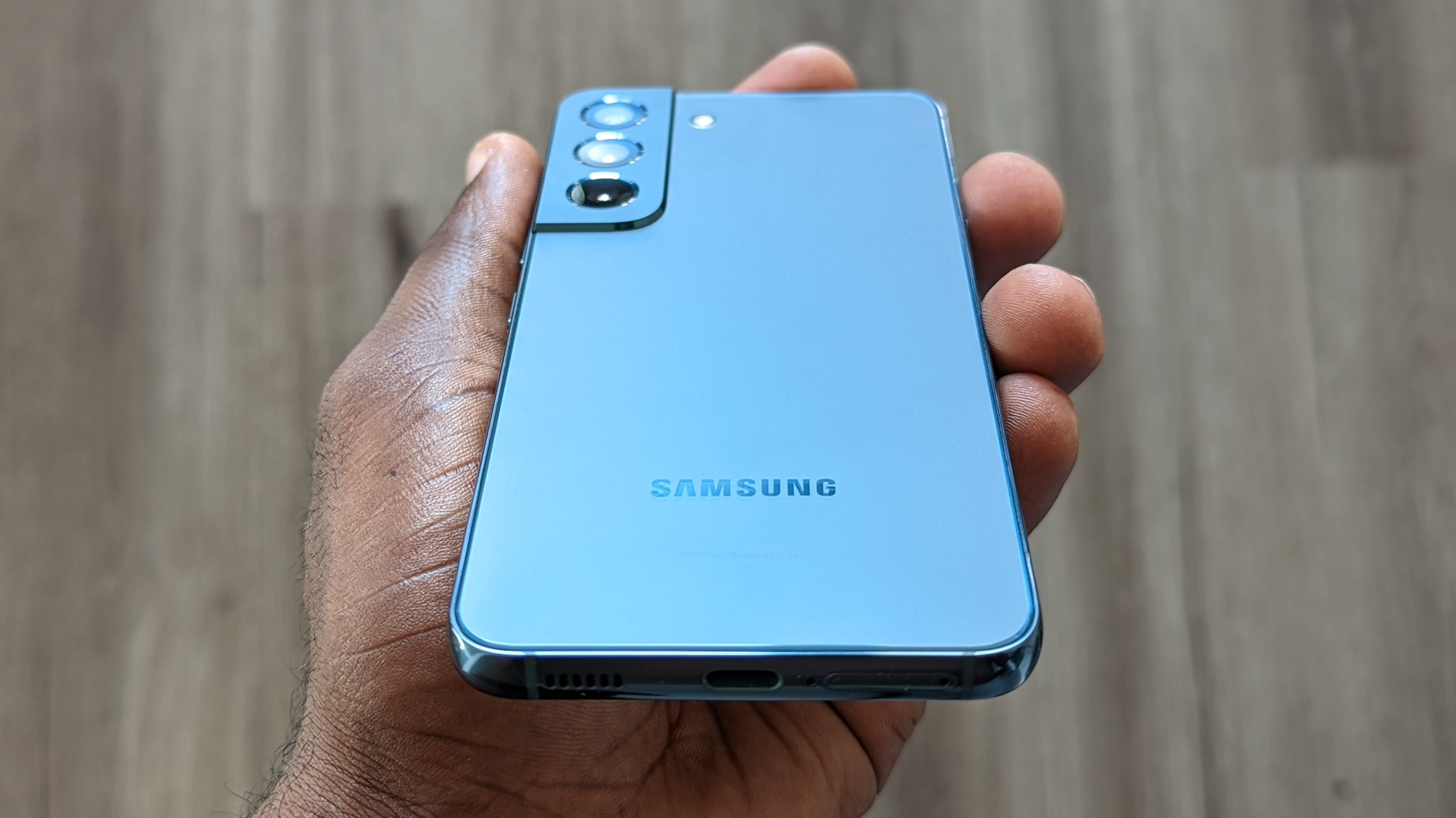
The Galaxy S22 and iPhone SE (2022) are targeted at two very different audiences. The Samsung phone is an Android phone aimed at the mainstream, being cheaper and smaller than the other members of the S22 family. As such, it packs everything you could want out of a modern smartphone, with the possible exception of long battery life. Extras like a fast refresh rate, a borderless screen, and triple rear cameras justify the Galaxy S22's price premium over the iPhone.
But the latest iPhone SE (2022) shouldn't be dismissed just because it's missing a few whizbang features. The A15 chip and Apple's strong support track record means this model is guaranteed to have a long life ahead of it, even if at first glance it already looks pretty dated. The inclusion of 5G support means the iPhone SE is good to go on the latest cellular networks; perhaps not a big deal today, but it should make this model feel more current in years to come. This is a phone that does the basics just fine, and will likely keep ticking along six, seven or even more years into the future.
Then there's the question of the price. At around twice the cost of the iPhone SE, the Galaxy S22 demands a lot more cash for those high-end extras. For $429 — as opposed to Samsung's $849 — the iPhone SE is a tempting buy for anybody who isn't tempted by the very latest display and camera features, and just wants a basic no-fuss smartphone.
But if you want your phone to do more — whether it's photographically, in terms of the smoothness of the scrolling experience or value-added extras like the DEX desktop interface — the Galaxy S22 is worthy of your attention.
Be an expert in 5 minutes
Get the latest news from Android Central, your trusted companion in the world of Android

Alex was with Android Central for over a decade, producing written and video content for the site, and served as global Executive Editor from 2016 to 2022.
